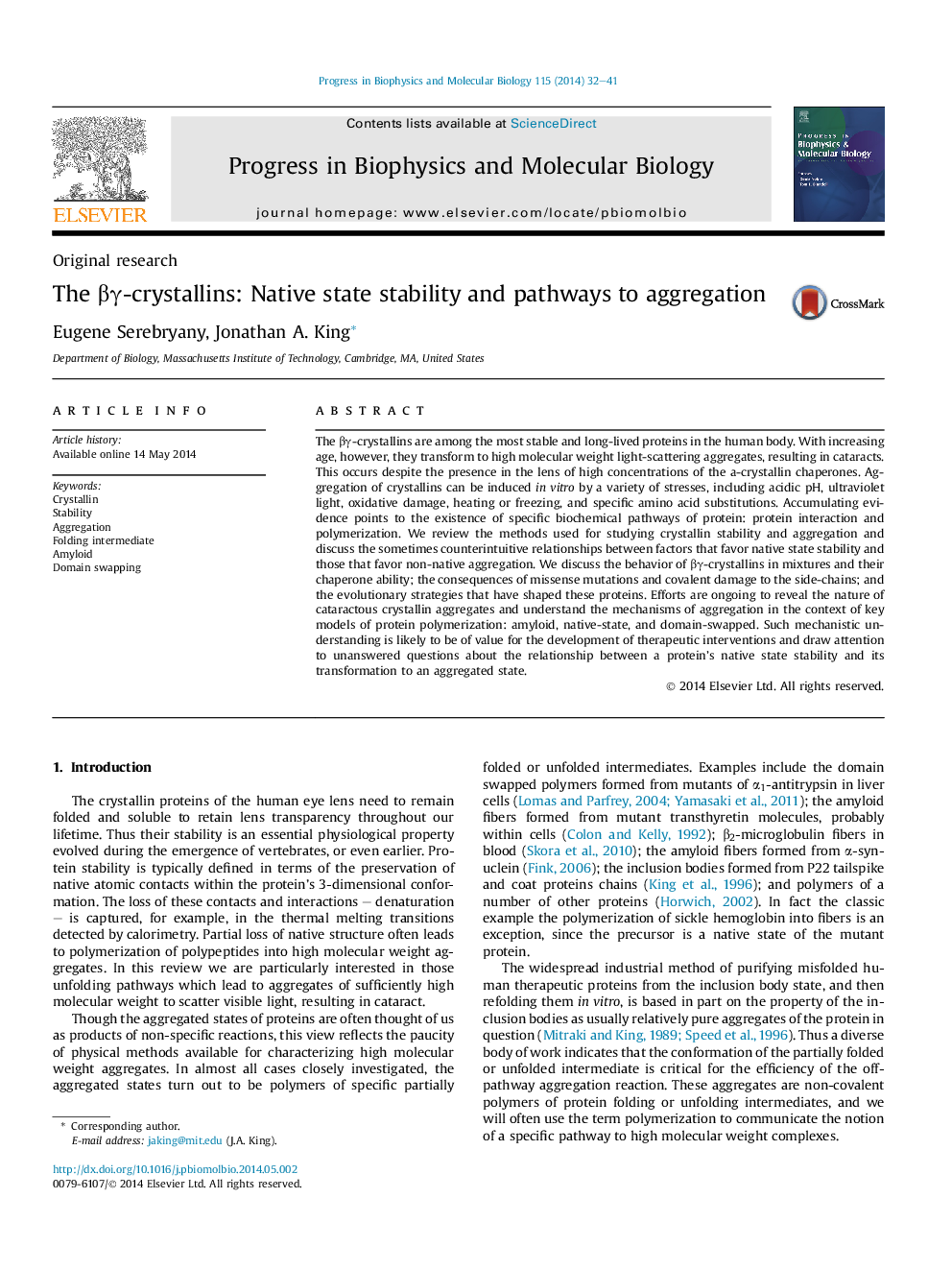| Article ID | Journal | Published Year | Pages | File Type |
|---|---|---|---|---|
| 2070002 | Progress in Biophysics and Molecular Biology | 2014 | 10 Pages |
The βγ-crystallins are among the most stable and long-lived proteins in the human body. With increasing age, however, they transform to high molecular weight light-scattering aggregates, resulting in cataracts. This occurs despite the presence in the lens of high concentrations of the a-crystallin chaperones. Aggregation of crystallins can be induced in vitro by a variety of stresses, including acidic pH, ultraviolet light, oxidative damage, heating or freezing, and specific amino acid substitutions. Accumulating evidence points to the existence of specific biochemical pathways of protein: protein interaction and polymerization. We review the methods used for studying crystallin stability and aggregation and discuss the sometimes counterintuitive relationships between factors that favor native state stability and those that favor non-native aggregation. We discuss the behavior of βγ-crystallins in mixtures and their chaperone ability; the consequences of missense mutations and covalent damage to the side-chains; and the evolutionary strategies that have shaped these proteins. Efforts are ongoing to reveal the nature of cataractous crystallin aggregates and understand the mechanisms of aggregation in the context of key models of protein polymerization: amyloid, native-state, and domain-swapped. Such mechanistic understanding is likely to be of value for the development of therapeutic interventions and draw attention to unanswered questions about the relationship between a protein’s native state stability and its transformation to an aggregated state.
